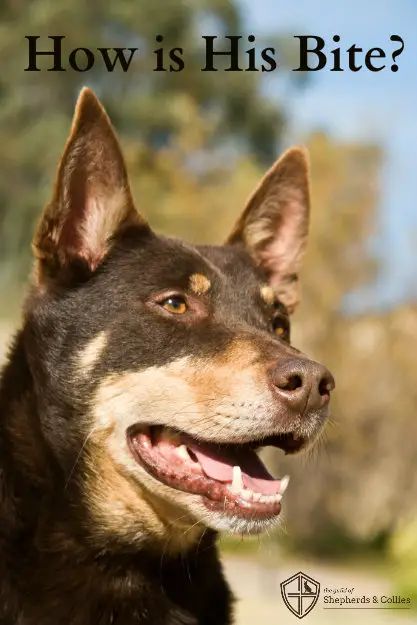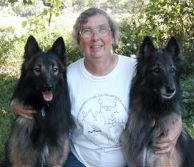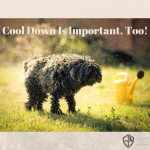5 Types of Herding Breed Dog “Bites”

There are Five Basic Types of Herding Breed Dog Bites - Which Bite Does Your Dog Have?
“How is his bite?” When dog fanciers ask a friend this, they aren’t referring to the temperament and aggression of the dog in question. Instead, they are wondering about the occlusion or alignment of the dog’s teeth. There are a few types of herding breed dog bites, but only one is the most preferred.
Most herding breed standards (the description of a “perfect” example of the breed, as determined by the parent club for the breed) ask for a “scissors bite”. The Briard standard is an example: “Bite, Teeth--strong, white and adapting perfectly in a scissors bite” (AKC Briard Club of America). Many standards, such as the Pembroke Welsh Corgi, do allow for a “level bite”, but scissors is almost universally preferred.
So what does this all mean and why is it important? First, the “bite” of a herding breed dog is important due to their origins. While ideally your herding dog would not have to nip or grip to move livestock, there are times when it has to be done. A recalcitrant steer or an aggressive ram may both need an added incentive to move along. The AKC judges guidelines on dentition mention that herding dogs should not be docked for broken teeth or teeth that may have been knocked out while working. In general, that would apply to incisors or possibly canines that could be injured by a kick or a rough fall. Missing premolars and molars are faulted in many standards.
Here are three types of “bites” your herding breed dog may have:
Scissors Bite
In a scissors bite, the six incisors (small teeth in front between the large canine teeth) from the upper jaw close just in front of the lower six incisors. The teeth are touching, or almost so, but the top ones are slightly in front. All the incisors should fit together this way. Incisors that are too low are called “dropped”. That is a minor fault.
Level Bite
If the incisors meet directly without either the lower or upper ones setting in front, that is called a level bite. This is considered less desirable as the surfaces of the incisors may wear down from the contact.
Undershot Bite
With an undershot bite, the lower jaw is longer than the upper one. The incisors aren’t touching or often even close to each other. This sort of bite is seen in a Bulldog – a breed bred to grip and hang on.
Overshot Bite
With an overshot jaw, the top jaw is longer.
Wry Bite
With a scissor or level bite, the rest of the teeth should align properly along the jaw. If the jaws are disproportionate, as with under or over shot situations, the teeth may not align well. This can cause teeth to grow into the roof of the mouth. With a wry bite, one side of the jaw is longer than the other. This, again, causes a misalignment. When teeth aren’t aligned well, your dog has discomfort, may not be able to close his mouth comfortably and, in extreme cases, may not be able to eat well.
Which “Bite” Is Best, Most Troublesome
Many shepherds feel that a scissor bite is the most effective for influencing livestock, while also minimizing any trauma to the stock. Herding dogs generally do a quick nip or grip and immediately let go so the stock has a chance to respond appropriately. In addition, they are concerned about dental wear from the tooth contact. However, others feel that a level bite is just as effective.
While there are many dogs who do not have perfect scissor bites who go through life with no problems, the “off bite” has a chance of causing lifelong discomfort for the dog. It is for this reason, along with functionality for working herding dogs, that conformation judges do look at the “bite” and use it in their considerations.
So, how is your dog’s “bite”?
Article By:
Deb M. Eldredge, DVM
Meet Our Evangelist







